Fulfillment solutions that add value
Bert Hellinx, Solution Design & Onboarding Director at Radial Europe, is at the forefront of crafting tailored fulfillment solutions for ecommerce retailers. His experience in delivering value to customers is invaluable. Join us as we delve into Bert’s innovative approach and uncover the strategies behind his success in driving customer satisfaction and business growth.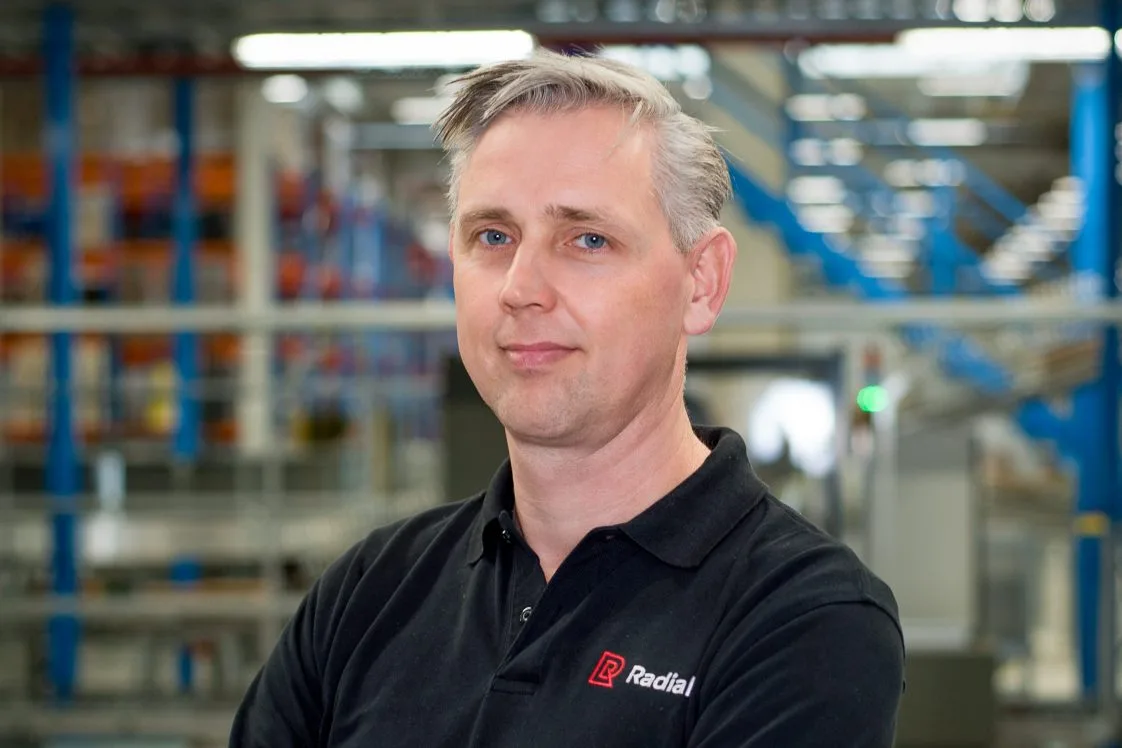
An interview with Bert Hellinx
Welcome to our interview series with key leaders at Radial Europe. In today’s feature, Bert Hellinx, Solution Design & Onboarding Director, provides his insights into the design process of tailored fulfillment solutions for our ecommerce customers:
Understanding our customers’ needs
Joanna: Hello Bert. You are responsible for designing and implementing fulfillment solutions for Radial’s customers. Could you describe your approach and the principles you follow?
Bert: Hello Joanna, Sure. The most crucial part of our work is really understanding what our customers need. Without getting that right from the start, it’s impossible to create the perfect solution for them. We use our know-how in ecommerce fulfillment to help and advise our customers, making sure their needs make sense and pushing back if necessary. This step is really important but often does not get enough attention.
I’ve learned from designing solutions that skipping the step of fully understanding what’s needed leads to mistakes. I’m a firm believer in taking the time to get this right, as it’s the key to creating solutions that truly work for our customers.
Joanna: How do you go about achieving this understanding?
Bert: We start by digging into the customer information we have and organizing the data to highlight the main logistics needs. It’s about spotting any missing pieces or issues early on. We ask ourselves: Does the information make sense? Are we missing anything? We take the time to ensure we’re on the same page with the customer, ironing out any unclear details or open questions to build a clear and complete picture. Our aim is to perfectly align with what the customer needs.
Adding value is the foundation of our approach
Joanna: Why is it so important to understand customers’ needs?
Bert: Understanding our customers lets us pinpoint and design the best-fit solutions for them. It’s all about leveraging our expertise and really listening to and comprehending their needs. This foundation is more important than just going after the latest trends or technologies. We don’t chase after “cool” solutions like automation just for the sake of it. Our priority is to create real value for our customers with our solutions. Without this focus, our work wouldn’t be as meaningful.
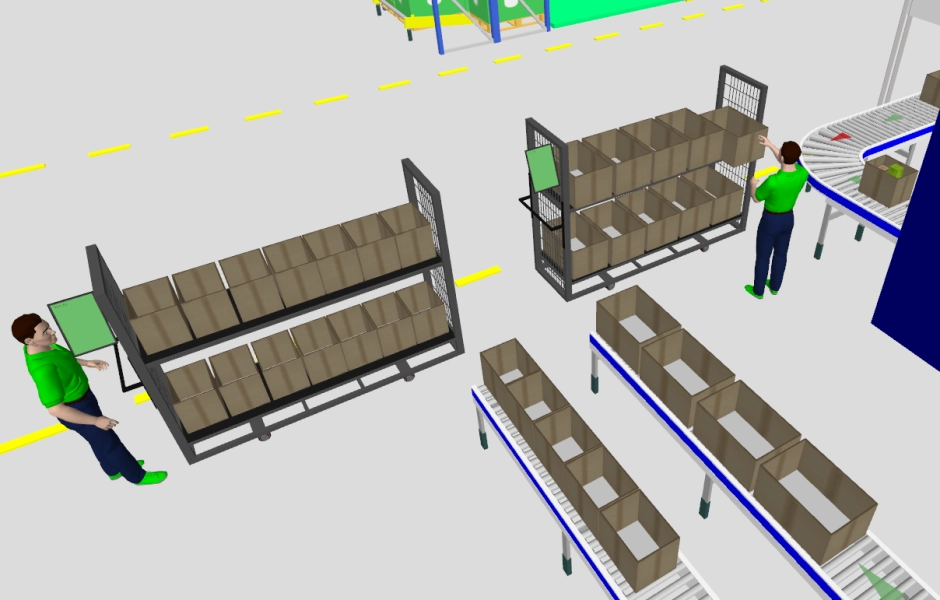
Example of a 3D drawing of an automated packing area
Effective warehouse designing
Joanna: What aspects of the solution design drive your success?
Bert: Our main goal is to ensure that the solutions we offer truly benefit our customers. Yes, we look at costs, but we also focus a lot on qualitative characteristics like:
Flexibility
Reliability
Redundancy
We carefully evaluate different scenarios to find the best solution for each customer. We’re not just trying to sell something; we’re dedicated to finding the right solution that meets each customer’s unique needs. This customer-centric approach is the core of our success. That’s what I believe in.
Joanna: Do the solutions that Radial offers customers differ from those offered by other companies?
Bert: Radial provides tailored solutions. In a tailored business model, the options are endless and solutions extend beyond technological choices. Understanding the customer will influence decisions such as warehouse management system (WMS) configuration and the placement of pallets or stations. These seemingly minor details can make a huge difference. It’s about how smart design of the warehouse you produce.
Effective warehouse designing requires a blend of expertise, practical experience, skilful execution and attention to detail. While competitors may use similar technologies, output and data will never be exactly the same.
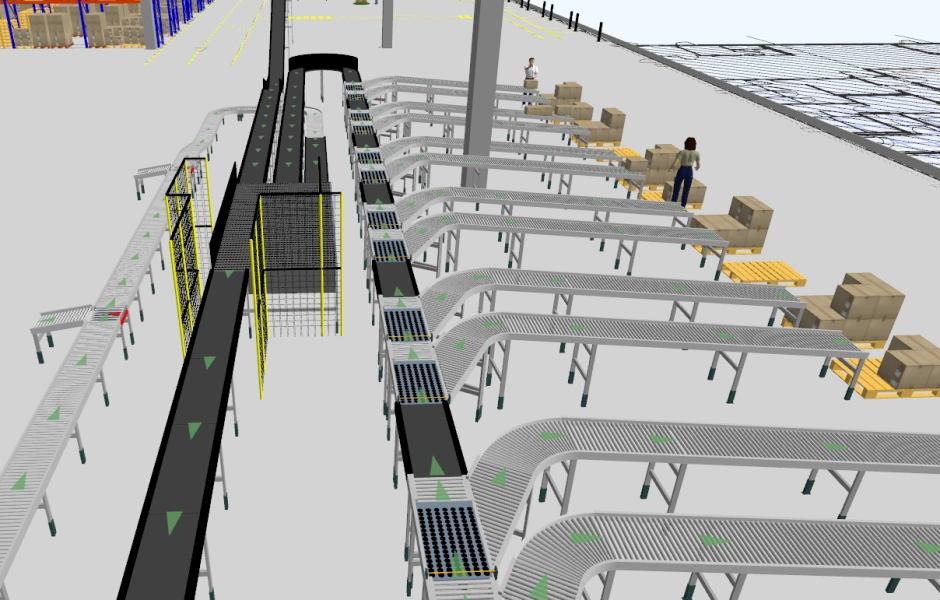
Example of a 3D drawing of a sorting system for finished packages
Breaking down complex ideas in simple terms
Joanna: Once you have ensured a thorough understanding of the customer needs, what actions do you take next?
Bert: Once we’ve analysed the options, done the initial calculations, and chosen our approach, we dive into the details of the project. This includes working out the costs, which we do alongside the main design work to see how different options affect the budget. We also prepare drawings to visualize our concepts, making them tangible and easier to explain to the customer.
Communication plays a critical role at this stage. Our aim is to break down complex ideas into simple, understandable terms, with visualization playing a key part. Capturing the customer’s imagination is crucial; if we can do that, we’re halfway to success.
Joanna: When you talk about the importance of communication, do you only think about communication with customers?
Bert: Definitely not. Communication within our team and the wider company is just as important. We focus on creating projects that customers will value. To achieve this, it’s vital that everyone involved is fully informed and fully committed from the beginning.
Additionally, during the design process, we make sure to stay in sync with the business side and learn from them, ensuring knowledge flows in all directions. This collaboration helps us refine our designs to be as strong as possible, ensuring everyone is on the same page. By the time we present our project to the customer, there are no surprises, and we all see it as a collective success story.
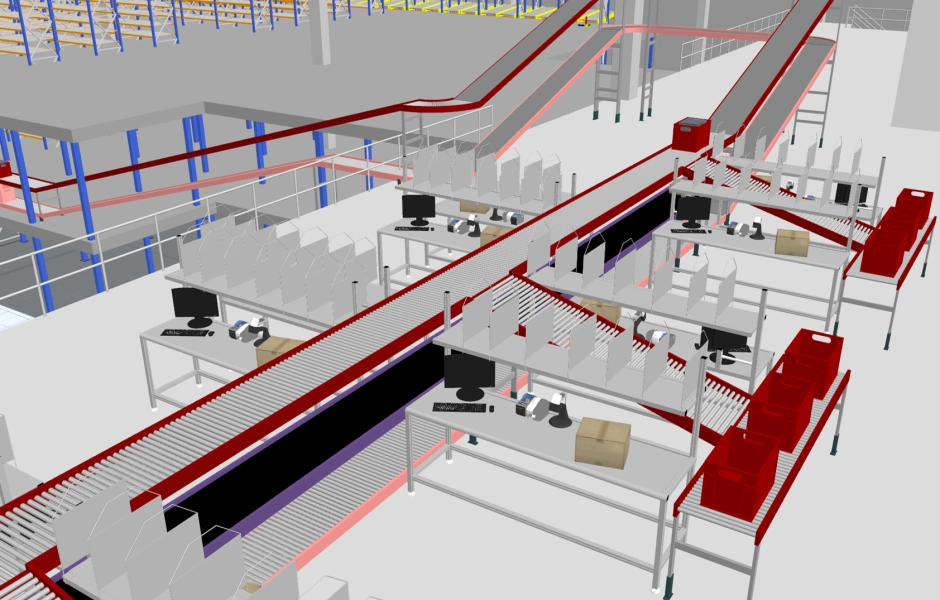
Example of a 3D drawing of a packing area
Visuals are key
Joanna: How do you present the designed fulfillment solution to the customer?
Bert: We start by explaining the concept and why it is the right fit for the customer. To make things clear, we use 3D drawings and videos to detail specific processes. These visuals help our customers easily understand the solution. The goal is to keep things simple and avoid any designs that might confuse or make it hard to see the value in what we’ve done. It’s important to have a clear storyline to communicate our message effectively.
Joanna: According to you, are the visuals an important part of the overall presentation? And do the ones we present to customers differentiate us from our competitors in the market?
Bert: Definitely, visuals are key, the detail in our drawings and the specific elements we include can really set us apart. We’re actively working to become a differentiator in this field. While our current visual outputs might not be groundbreaking, I’m confident that we will keep improving. I strongly believe that our commitment to enhancing our visuals will make our presentations stand out.
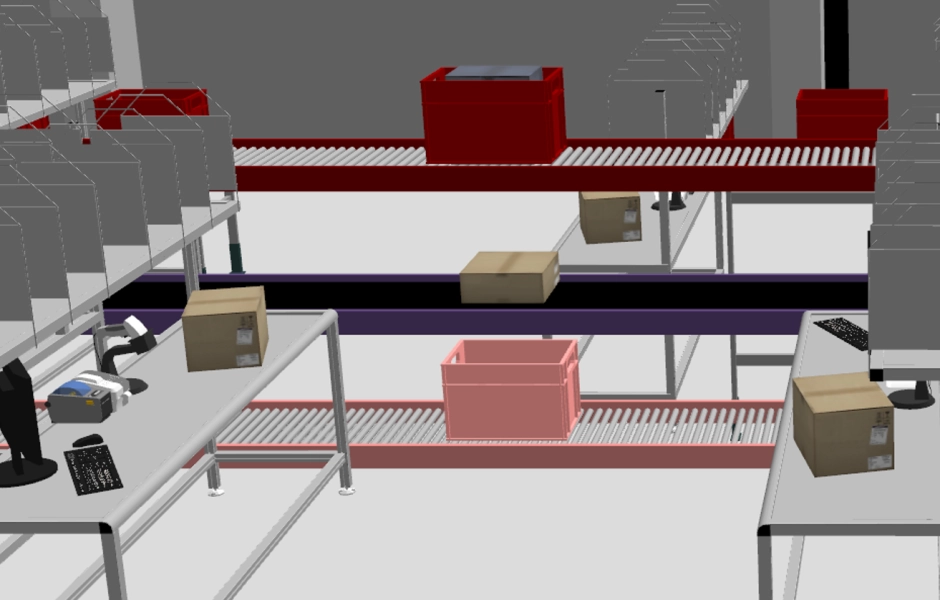
Part of a 3D drawing of a packing area
Implementing the designed solution
Joanna: Is the solution designed for a tender typically implemented as designed, or are changes commonly made during implementation?
Bert: Our goal is to create realistic solutions that we intend to implement as they are designed. Once a customer decides to work with us, we take a closer look to make sure everything is set to go.
This means:
- Reassessing the scope to ensure it still aligns with the customer’s current needs
- Making sure any changes in business volumes are accounted for
- Seeing if they need any additional services we didn’t plan for initially
This assessment, which takes place in the first few weeks, helps us to identify any differences between what was discussed during the sales phase and what the customer actually needs at that point in time.
Joanna: Does the work of the Solution Design team end there?
Bert: Not at all. The Solution Design Engineers remain part of the project until the end. Their role is to gate-keep the original concept, making sure the impact of potential changes doesn’t compromise the concept itself.
Beyond that, they’re involved in projects for existing businesses as well. They help our teams or ecommerce clients with any tech issues or necessary design tweaks, especially when business volumes change. We continuously assess solutions and identify opportunities for enhancing productivity, increasing quality and reducing lead times.
Deliver value and trigger imagination
Joanna: In your view, what distinguishes Radial’s design solutions from those offered by our fulfillment competitors?
Bert: I believe our strength lies in our comprehensive process, which we follow from beginning to end. We prioritize understanding the customer’s requirements thoroughly. We don’t design solutions because we like it or it’s sexy. Our focus is on delivering tangible value.
Adding value is the foundation of our approach, and then being able to explain it to the customer in a simple way that triggers the imagination. I think this combination is what truly sets us apart and makes us strong.
Joanna: Thank you Bert for your insightful responses. Your knowledge and perspective provided valuable insight into the design process for Radial’s order fulfillment solutions. I hope we can talk soon about the new technologies you are implementing in your department.
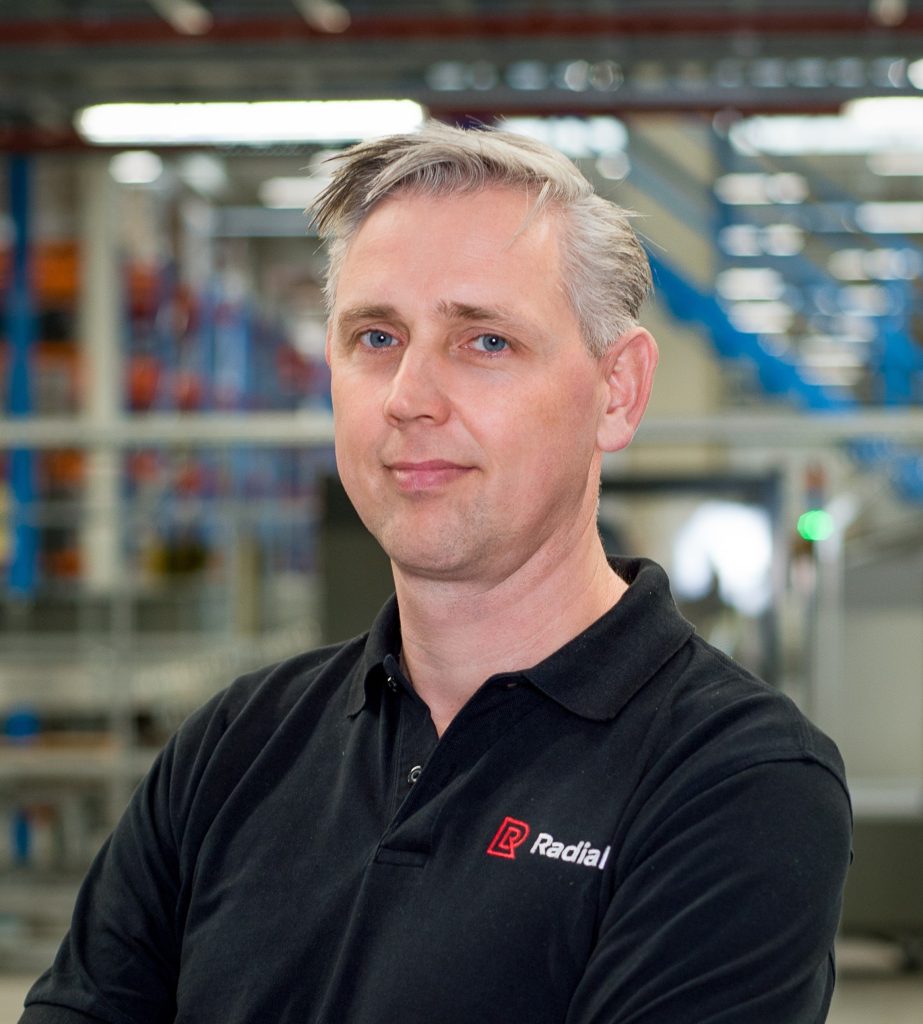
Bert Hellinx, Solution Design & Onboarding Director, Radial Europe
Bert’s journey into logistics began in 2005, instantly drawn to the fast-paced environment from the very beginning. Over two decades, he has gained lots of experience working with various sectors, including spare parts, consumer goods, and healthcare. It’s in the recent years, however, that he has discovered what his true passion is: using his experience to help customers solve their unique problems.
Tap into Bert Hellinx’s expertise and transform your ecommerce operations.
